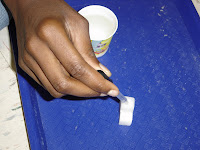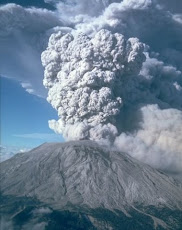Over the past couple of weeks the students have been investigating the concept of weathering. All rocks weather when they are exposed to Earth's atmosphere. However, different types of rock weather at different rates and most
visible effects seen from weathering occurs very slowly. Due to these circumstances the students needed an easier way to study the effects of weathering. Therefore the students used scientific models to simulate the effects of weathering in the
classroom and at a much more rapid rate.

The students put on their "Scientific
Slueth" hats and built a "temporary tombstone" out of sugar cubes to help them investigate how a rock that just sits in a
cemetery can crack, break, and wear down when exposed to rain.
The kids test how a sugar cube tombstone can be weathered by water.
Los niños probar cómo una lápida de cubo de azúcar puede ser resistida por agua.






